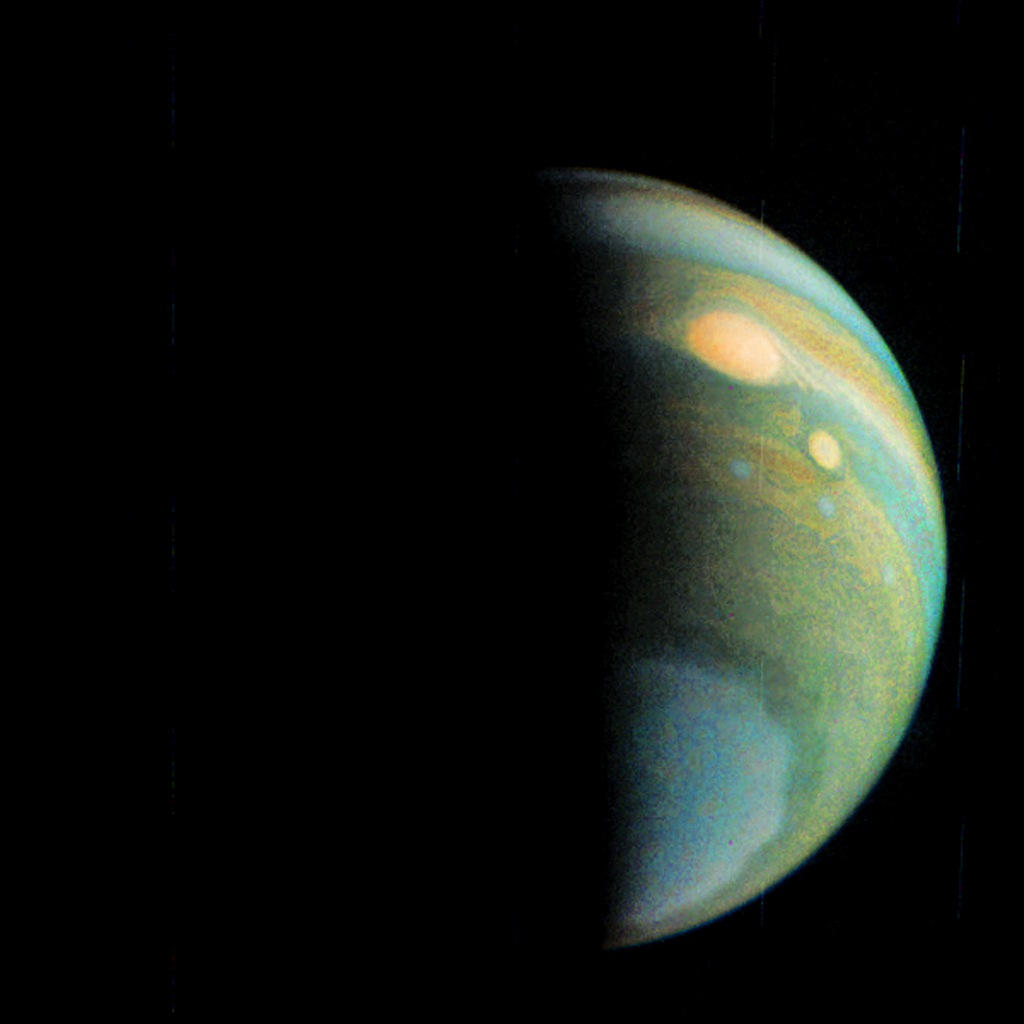NASA Jupiter Probe Makes 4th Flyby of Giant Planet

NASA's Juno spacecraft has flown by Jupiter for the fourth time.
Juno skimmed about 2,670 miles (4,300 kilometers) above Jupiter's cloud tops at 7:57 a.m. EST (1257 GMT) this morning (Feb. 2), zooming by at 129,000 mph (208,000 km/h) relative to the giant planet, NASA officials said.
All eight of Juno's science instruments were on and collecting data during the flyby if all went according to plan, they added.
Juno launched in August 2011, on a $1.1 billion mission to learn more about Jupiter's composition, magnetic field and interior structure, including whether or not the gas giant harbors a solid core. The probe arrived at Jupiter on July 4, 2016.
Juno is in a highly elliptical orbit that brings it close to the gas giant just once every 53 days. Most mission-relevant data is gathered during these flybys, the previous three of which occurred last August, October and December.
Though mission scientists are still analyzing the information collected during these previous encounters, they have already learned some interesting things.
"Revelations include that Jupiter's magnetic fields and aurora are bigger and more powerful than originally thought and that the belts and zones that give the gas giant's cloud top its distinctive look extend deep into the planet's interior," NASA officials wrote in a statement today. "Peer-reviewed papers with more in-depth science results from Juno's first three flybys are expected to be published within the next few months."
Get the Space.com Newsletter
Breaking space news, the latest updates on rocket launches, skywatching events and more!
Juno was originally supposed to shift into a 14-day orbit in October, but an issue with engine valves caused mission controllers to call off a planned thruster firing that would have made that happen. The Juno team is still investigating the possibility of moving the probe onto a shorter orbital path, NASA officials said.
Juno's mission is scheduled to end in February 2018 with an intentional death plunge into Jupiter's thick atmosphere.
Follow Mike Wall on Twitter @michaeldwall and Google+. Follow us @Spacedotcom, Facebook or Google+. Originally published on Space.com.
Join our Space Forums to keep talking space on the latest missions, night sky and more! And if you have a news tip, correction or comment, let us know at: community@space.com.

Michael Wall is a Senior Space Writer with Space.com and joined the team in 2010. He primarily covers exoplanets, spaceflight and military space, but has been known to dabble in the space art beat. His book about the search for alien life, "Out There," was published on Nov. 13, 2018. Before becoming a science writer, Michael worked as a herpetologist and wildlife biologist. He has a Ph.D. in evolutionary biology from the University of Sydney, Australia, a bachelor's degree from the University of Arizona, and a graduate certificate in science writing from the University of California, Santa Cruz. To find out what his latest project is, you can follow Michael on Twitter.









